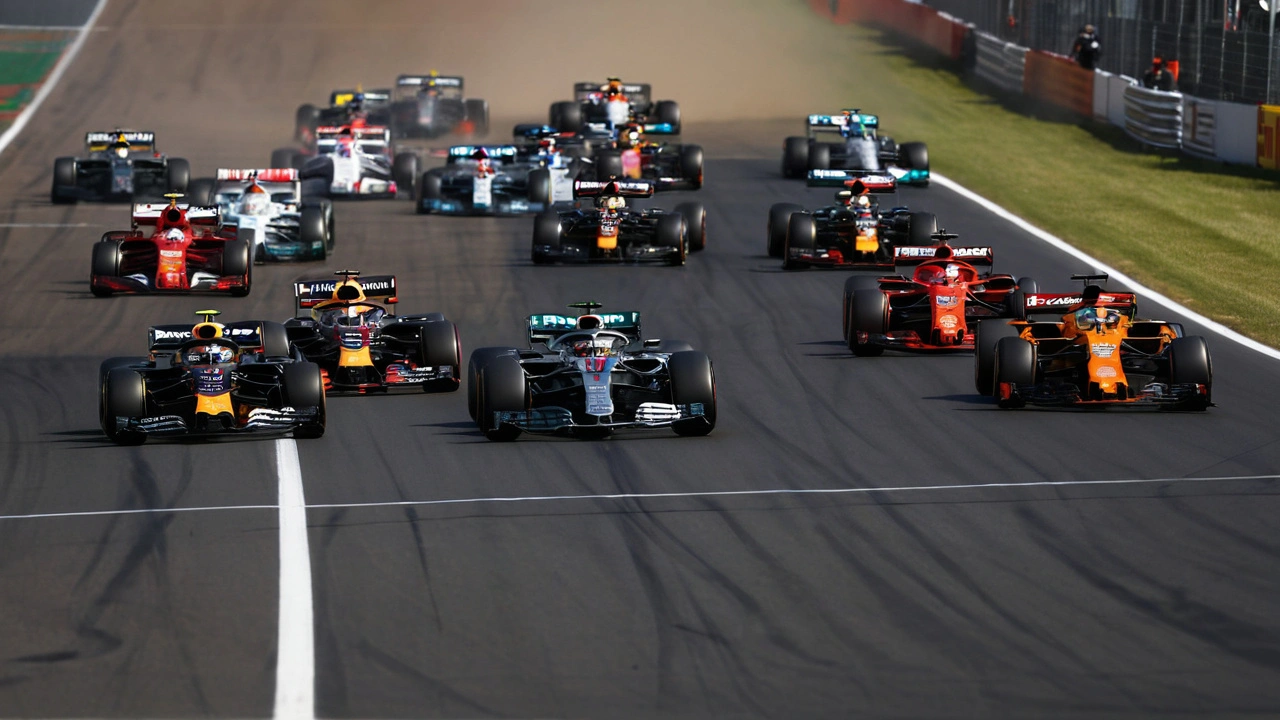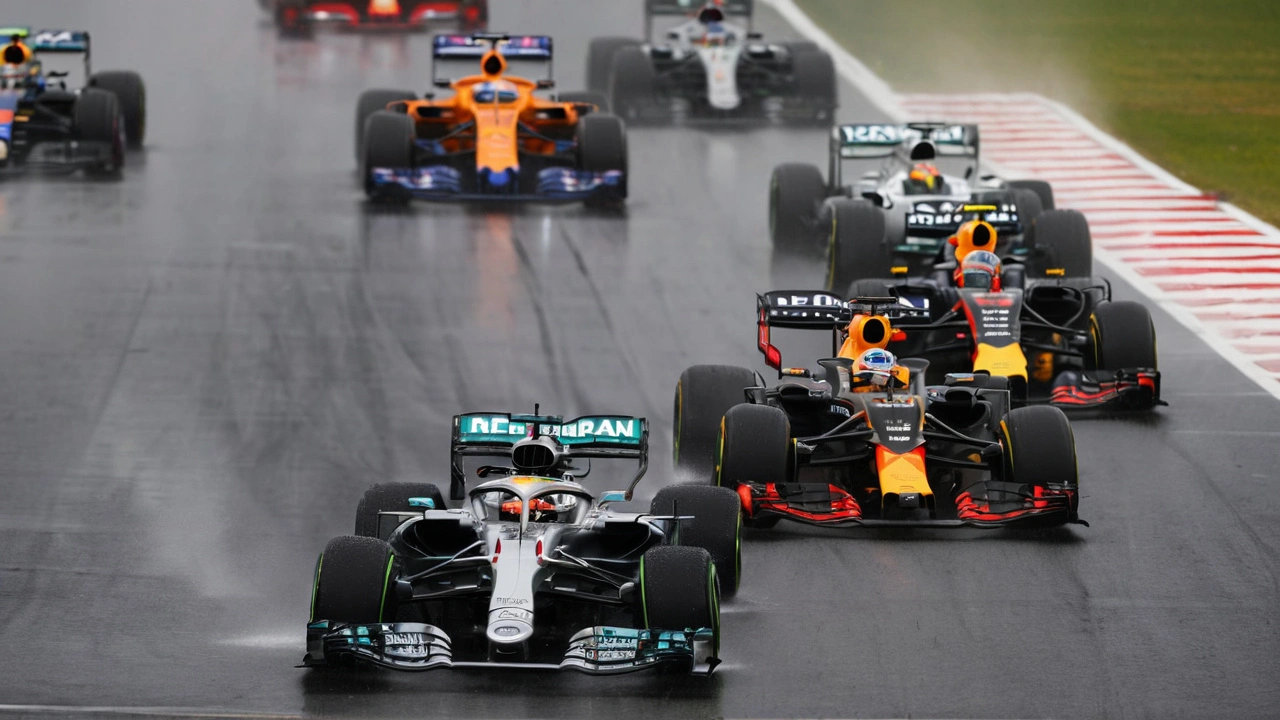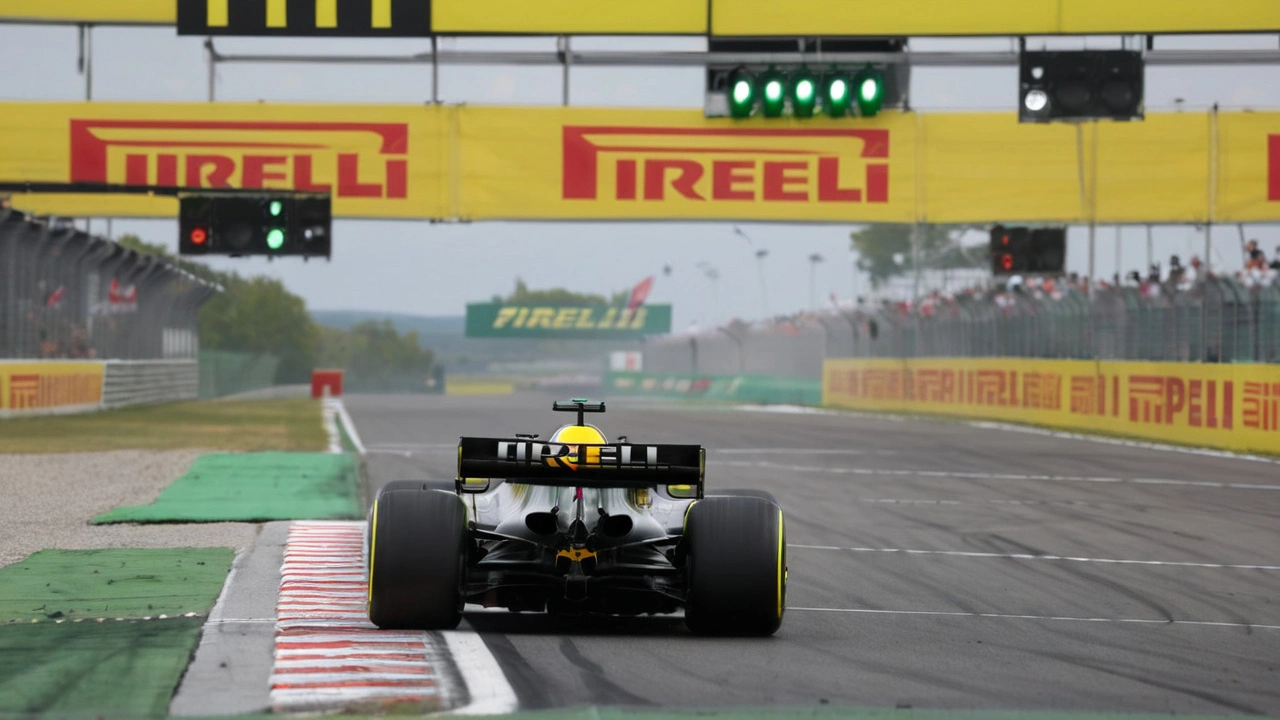The Strategic Puzzle of the Hungarian Grand Prix
The Hungarian Grand Prix, marking the 13th round of the 2024 Formula 1 World Championship, is shaping up to be a fascinating race with a myriad of strategic possibilities. As drivers prepare to take on the challenging Hungaroring, they must consider not only their driving skills but also the best approach to tire management and pit stops. This year's race, in particular, is marked by unpredictable weather and a complex mix of variables that could significantly influence the outcome.
Front Row Dynamics: The McLaren Advantage
Leading the pack will be Lando Norris, piloting his McLaren from the front row alongside his teammate. This all-McLaren front row is a result of a qualifying session that was heavily impacted by rain, adding an extra layer of complexity to the drivers' plans. The wet conditions have carried over to race day, with lingering clouds keeping the temperatures lower than initially forecasted. This cooler weather can impact tire performance and wear, making strategic planning even more critical.
Pirelli's Recommended Strategies
Tire manufacturer Pirelli plays an essential role in shaping race strategies with their recommendations. For this race, Pirelli advises that the quickest route to the finish line involves a two-stop strategy, beginning on the Medium compound tires. According to Pirelli, the optimal window for the first pit stop spans from lap 16 to 21, during which drivers are advised to switch from Medium to Hard compound tires.
The second stop would then involve reverting back to the Medium tire, offering a balanced approach between durability and speed. This strategy is particularly beneficial for teams like Red Bull and Ferrari, who possess two fresh sets of Medium tires. In contrast, McLaren drivers only have a single new Medium set available, which may force them to consider alternative strategies.
Alternate Approaches: Risk and Reward
While Pirelli's proposal is widely regarded as the most efficient route, there are alternative strategies that teams might consider based on their specific circumstances and tire allocations. One such strategy involves starting the race on the Soft compound tires. This approach could offer an early speed advantage, enabling drivers to capitalize on the relatively cooler track temperatures.
After an initial shorter stint on Soft tires, the strategy would then involve two extended runs on the Hard compound. This plan could be particularly advantageous if the driver can manage tire degradation effectively. In some scenarios, teams might opt to switch back to the Medium tires towards the end of the race, particularly if the first Hard compound stint is run deep into the race, balancing speed and tire wear for a final push.

Red Bull and Ferrari: Medium Tire Advantage
Red Bull and Ferrari are entering this race with a notable advantage concerning their tire allocations. With two fresh sets of Medium tires, these teams have greater flexibility when it comes to adjusting their strategies in response to live race conditions. This could prove to be a critical factor, especially if variables such as weather conditions or unexpected incidents on the track come into play.
The ability to deploy fresh Medium tires at strategic points in the race offers a significant speed and durability advantage. This could help drivers maintain a competitive edge, particularly during crucial overtaking opportunities or when attempting to undercut rivals during pit stop cycles.
McLaren's Tactical Challenge
For McLaren, the challenge lies in managing their single set of new Medium tires effectively. This limitation means that meticulous planning and adaptability will be essential for their drivers to maintain their front-row advantage. The team might need to lean on their alternate strategies more heavily, particularly if the race dynamics shift unexpectedly.
In situations where the primary plan falters, McLaren might need to consider an aggressive early stint on Soft tires, followed by careful management of the Hard compounds to make up ground later in the race. This will require not just skillful driving but also precise communication and timing from the pit crew to execute flawlessly.

Impact of Weather Conditions
The weather remains an unpredictable factor that could upend even the best-laid plans. The cooler than expected temperatures could influence tire performance, making them last longer but potentially reducing the grip levels that drivers can exploit. This necessitates a dynamic approach to strategy, where teams must be ready to adapt on the fly based on real-time data and observations.
Lingering clouds and potential intermittent rain showers could also play into the hands of those teams that reacted well to the wet qualifying session. Drivers who are adept at managing varying grip levels and who can stay calm under fluctuating conditions will have a distinct advantage.
Conclusion
The Hungarian Grand Prix of 2024 promises to be a highly tactical battle, where tire management, weather conditions, and split-second decisions will play pivotal roles in determining the outcome. Whether teams follow Pirelli's recommended two-stop strategy or opt for more unconventional approaches, the race is set to offer thrilling unpredictability from start to finish. With McLaren leading the front row, Red Bull and Ferrari holding a tire advantage, and unpredictable weather on the horizon, fans can eagerly anticipate a gripping contest.

